Ever since Apple's announcement of the two year transition period from Intel x86 to 'Apple Silicon' Arm-based processing analysts and technology enthusiasts have been keen to see Apple's first switchover machines. Apple's extraordinary claims but vague performance comparisons at the 'One More thing' unveiling event didn't really help inform. And we've seen some good and bad indicative leaks of Apple M1 SoC performance in the run up to the first Apple Silicon Mac computers becoming available.
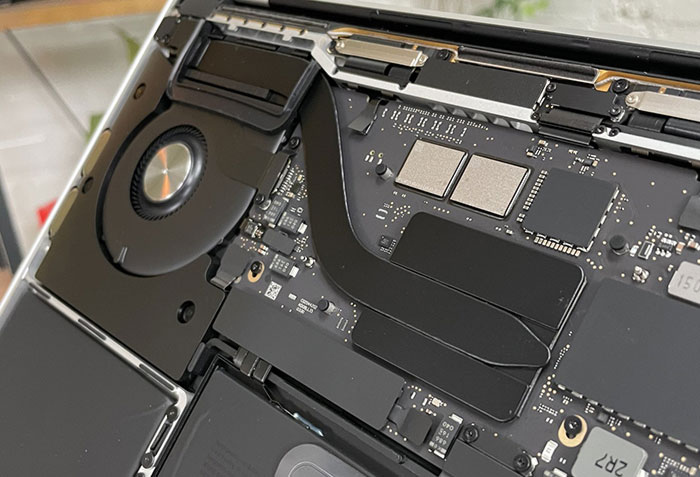
Yesterday afternoon the first professional reviews started to get published on the web and social media platforms to help us get a clear picture of the capabilities of the M1 SoCs and the first trio of Macs built using these processors. I've looked at five 'pro' sources to see the lay of the land; on the web I've pondered over reviews from the likes of Anandtech, Ars Technica, and Engadget, and for social media reviews I watched the videos published by Marques Brownlee and Dave Lee. Sadly we don't have an M1 Mac at HEXUS HQ at this time.
All the reviews share a positive picture of the hardware capabilities but for would be buyers the advice in general is that if you don't need a new Mac right now it would be best to wait for the third party app support to mature and any new platform bugs to be ironed out. However, performance advances in these first gen Apple Silicon machines were very apparent (even though they are mostly entry level Macs) and the jump in battery life is widely welcomed for the laptops.
While there are Mac using HEXUS readers, of course, many will be much more interested in the performance of the M1 hardware than in whether these are good machines to buy as upgrades to existing Apple computers. So, I've concentrated on collecting some PC comparison benchmarks from the sources listed above.
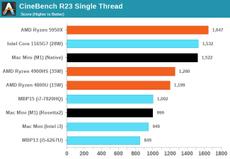 |
 |
 |
First up, above you will find three charts; Cinebench R23 single core, Cinebench 23 multi-core, and the Parallel GZip compression test. Add to this info the new M1 portables have much improved battery life using the same capacity batteries as their predecessors.
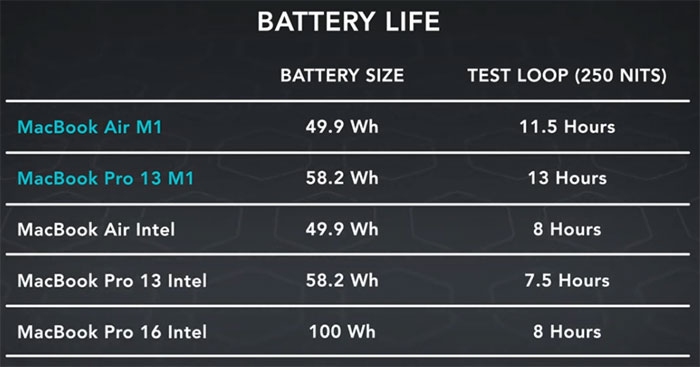
After the leaks it is good to see the above M1 compute confirmed. However, as an SoC there are other important things to factor in, such as how well the integrated GPU performs. Ars checked out the new M1 GPU performance vs recent iPads, iPhones and the Asus ROG Phone, but thankfully Anandtech looked much more closely at this aspect of the M1 SoC using benchmarks such as GFXBench Aztec, 3DMark IceStorm and even Rise of the Tomb Raider which was released in 2016 and is a "proper Mac port" with a built-in benchmark.
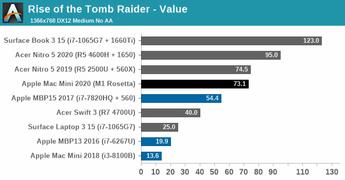 |
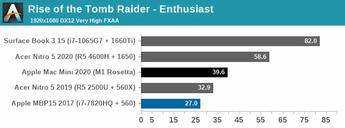 |
Of these graphics benchmarks I was most interested to see the new Mac Mini achieve an average 73fps at 768p and medium settings with no AA in ROTR. If you chose 1080p very high settings with FXAA applied the average frame rate was reduced to 40fps. Under the gaming load the whole package consumed just 16.5W. Remember that ROTR is, of course, a non-native Apple Silicon application that uses the Rosetta 2 translation layer.













